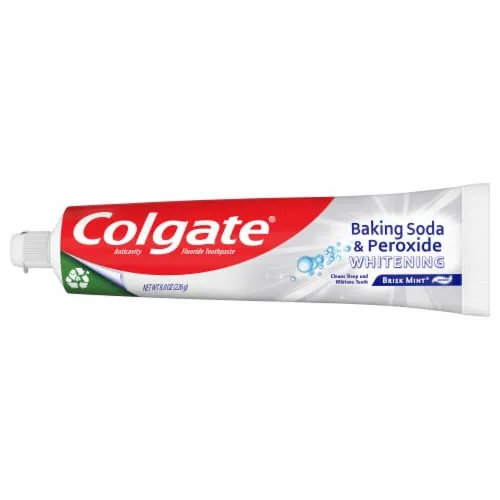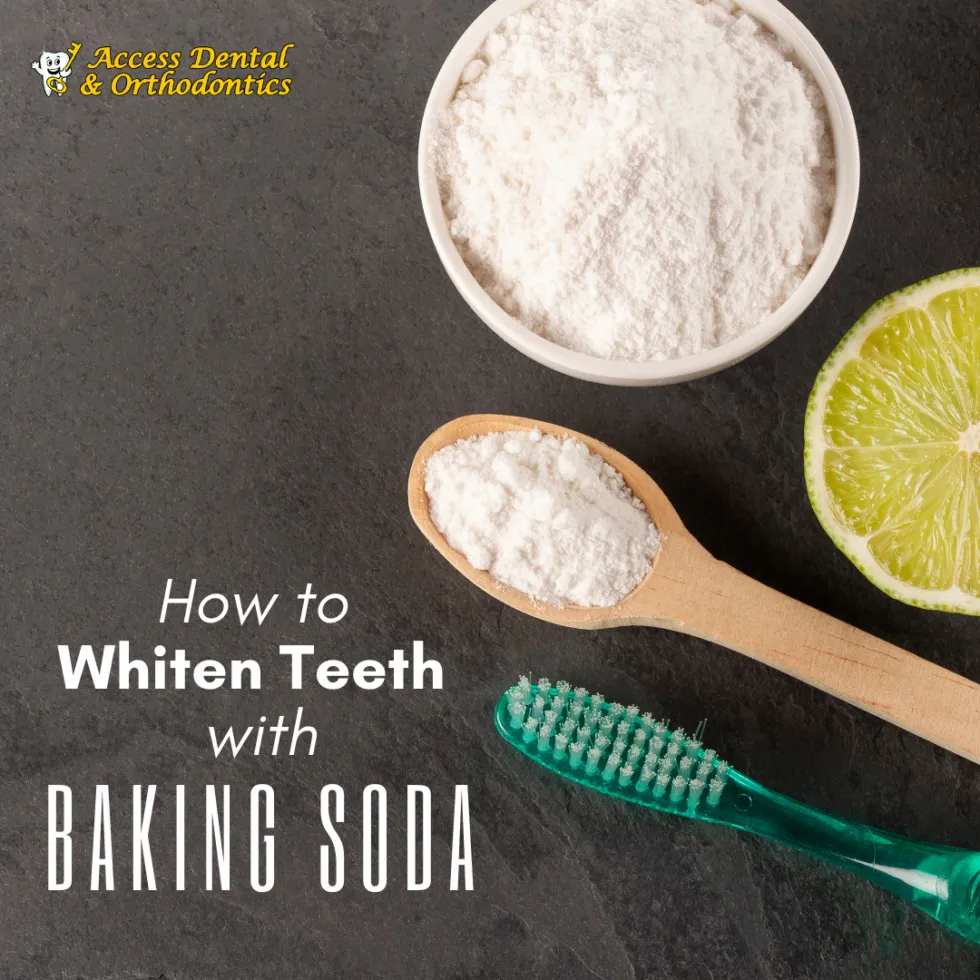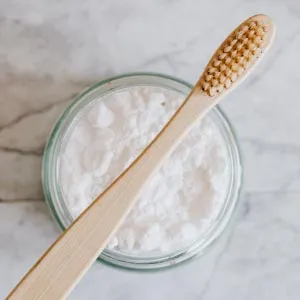What is Baking Soda & Peroxide Teeth Whitening
Baking soda and hydrogen peroxide have become popular home remedies for teeth whitening. This method involves using a mixture of baking soda (sodium bicarbonate), a mild abrasive, and hydrogen peroxide, a bleaching agent. The combination aims to remove stains and discoloration from the surface of teeth, resulting in a brighter smile. While many people swear by this DIY approach for its simplicity and accessibility, it’s important to understand the science behind it, the proper way to use it, and the potential risks involved.
The Science Behind Baking Soda & Peroxide
The effectiveness of baking soda and hydrogen peroxide in teeth whitening is based on their individual properties and how they interact. Both components contribute to the stain-removing process, although through different mechanisms. Understanding these mechanisms helps in appreciating why this method is favored by some and the limitations it possesses.
How Baking Soda Works for Teeth Whitening

Baking soda acts primarily as a mild abrasive. Its slightly gritty texture helps to scrub away surface stains from coffee, tea, and other foods and drinks. This abrasive action helps polish the teeth, making them appear whiter by removing the discoloration that clings to the enamel. However, the abrasive nature of baking soda means that excessive or improper use can lead to the erosion of enamel, making teeth more susceptible to sensitivity and decay. Therefore, using the right amount and technique is crucial.
How Peroxide Contributes to Whitening
Hydrogen peroxide is a bleaching agent that penetrates the enamel and oxidizes the stain molecules within the teeth. This process breaks down the stain compounds, making them less visible. The concentration of hydrogen peroxide determines the whitening power. However, higher concentrations also increase the risk of tooth sensitivity and gum irritation. In teeth whitening, hydrogen peroxide is usually used in low concentrations. Its effect on teeth is a gradual lightening process, and the results vary based on the original shade of the teeth and the severity of the stains.
Materials Needed for Teeth Whitening
Before you start the teeth whitening process, it’s important to gather all the necessary materials. This preparation ensures that you can perform the procedure safely and effectively. Fortunately, the materials needed are usually inexpensive and readily available, making this a cost-effective option for those seeking to brighten their smiles. Here’s what you will need.
Gathering Your Supplies

The following items are essential for teeth whitening using baking soda and hydrogen peroxide. Make sure you have them ready before starting the process. The process is simple but requires careful handling to avoid any potential adverse effects. The right tools are important for ensuring effective and safe teeth whitening.
Baking Soda
You need food-grade baking soda (sodium bicarbonate). Make sure it’s a fine powder to minimize the risk of scratching your enamel. You can buy it at any grocery store or supermarket. Always ensure the baking soda is fresh and stored properly to maintain its effectiveness. Proper storage prevents the absorption of moisture and maintains the quality of the product. Using fresh baking soda ensures optimal results.
Hydrogen Peroxide
You’ll need 3% hydrogen peroxide solution, which is commonly found in pharmacies. Higher concentrations are available, but they are not recommended for home use due to the increased risk of side effects. Always check the expiration date and store the bottle in a cool, dark place. Using a fresh and properly stored solution maximizes its whitening potential. Handle it with care to avoid any skin contact.
Water

Clean tap water is needed to rinse your mouth and dilute the solution. Make sure the water is clean and free from contaminants. Using clean water is important for oral health. Avoid using hot water as it can affect the solution’s properties. The water should be at room temperature to ensure the best results.
Teeth Whitening with Baking Soda & Peroxide Step-by-Step Guide
Following the correct procedure is critical to maximize results while minimizing risks. Always start with clean teeth and be gentle to avoid damaging your enamel. Patience and consistency are key. Performing each step carefully and with precision ensures the safest and most effective teeth whitening experience. Follow these steps to properly use baking soda and peroxide for teeth whitening.
Mixing the Solution
In a small bowl, mix one tablespoon of baking soda with two tablespoons of 3% hydrogen peroxide. Add a small amount of water if needed to create a paste-like consistency. The mixture should be thick enough to stay on your teeth but not so thick that it’s difficult to apply. Ensure that the mixture is uniform to apply the ingredients evenly. Avoid using too much water as it can dilute the effectiveness of the whitening agents.
Applying to Your Teeth

Apply the paste to your teeth using a soft-bristled toothbrush. Cover all surfaces of your teeth, making sure to reach every area. Be careful not to get the paste on your gums, as hydrogen peroxide can irritate the soft tissues. Use gentle circular motions to avoid damaging your enamel. Make sure all teeth surfaces are coated and covered. Applying the paste uniformly ensures an even whitening effect.
Brushing Technique
Brush your teeth gently for about two minutes. Avoid scrubbing aggressively, as this can damage your enamel. Use a soft-bristled toothbrush to minimize abrasion. Apply light pressure and focus on the surface of each tooth. Pay extra attention to areas with more visible stains. Consistent, gentle brushing is the key. Avoid brushing too hard, as it can damage the enamel.
Rinsing and Aftercare
Rinse your mouth thoroughly with water to remove any remaining paste. Rinse your toothbrush as well to remove any residue. You may also rinse with plain water or mouthwash. Avoid swallowing any of the paste. After rinsing, you can brush your teeth with regular toothpaste to remove any lingering taste. Always rinse thoroughly to remove any remaining baking soda and peroxide residue. Following rinsing, you can assess your teeth for any immediate results.
Benefits of Baking Soda & Peroxide for Teeth Whitening

Despite the potential risks, baking soda and hydrogen peroxide offer several advantages that make them attractive for teeth whitening. These benefits often appeal to individuals looking for affordable and accessible solutions. Here are some of the main benefits to consider. The simplicity and low cost often make it a top choice.
Cost-Effectiveness
Baking soda and hydrogen peroxide are extremely affordable compared to professional whitening treatments or over-the-counter whitening kits. The low cost makes them a budget-friendly option for those seeking to improve their smile without a significant financial investment. The affordability allows for consistent use, increasing the likelihood of noticeable results over time. The financial advantage is significant, making it accessible for many.
Accessibility
Baking soda and hydrogen peroxide are easily accessible. You can find them at almost any grocery store or pharmacy. This ease of access eliminates the need for appointments or waiting periods. The convenience of these ingredients makes teeth whitening readily available to everyone. This accessibility is especially important for those living in areas with limited access to dental services.
Potential Risks and Side Effects

While baking soda and hydrogen peroxide can whiten teeth, it’s important to be aware of the potential risks and side effects. Overuse or improper application can lead to adverse effects on your oral health. Knowing these risks enables you to make informed decisions. Being informed helps to minimize the dangers of using this method. It is critical to understand these potential problems.
Tooth Sensitivity
Hydrogen peroxide can cause tooth sensitivity, especially if used in high concentrations or for extended periods. This can make your teeth more sensitive to hot and cold temperatures. If you experience sensitivity, reduce the frequency of treatments. The irritation of enamel can expose the dentin, causing sensitivity. If sensitivity persists, consult with a dentist. Regular use might lead to increased sensitivity over time.
Gum Irritation
Hydrogen peroxide can irritate your gums, leading to redness, swelling, and discomfort. Make sure to avoid contact with your gums during the application process. If your gums become irritated, stop using the solution. Using a small amount can reduce irritation. Always apply gently to avoid causing gum irritation. Gum irritation is usually a result of the contact with the hydrogen peroxide solution.
Enamel Erosion
Baking soda is abrasive and can erode the enamel over time, making your teeth more susceptible to decay and discoloration. Excessive or aggressive brushing can accelerate this process. Minimizing the use of baking soda is important to prevent erosion. Using a soft toothbrush and gentle brushing techniques helps protect the enamel. Enamel erosion is irreversible, so careful use is critical.
Who Should Avoid This Method?
Individuals with sensitive teeth, gum disease, or enamel erosion should avoid using this method. Children and pregnant women should also consult with their dentist before attempting teeth whitening. It’s best to seek professional advice if you have any existing dental issues. Dental professionals can provide safer, more effective options. Always discuss your dental health with your dentist. Always ask your dentist for advice before starting teeth whitening.
Alternatives to Baking Soda & Peroxide
If you’re looking for safer or more effective teeth whitening methods, there are several alternatives available. Consider these alternatives. These options can offer better and safer results. Discuss the options with your dentist.
Professional Teeth Whitening
Professional teeth whitening performed by a dentist is the safest and most effective option. Dentists use higher concentrations of hydrogen peroxide and can apply it in a controlled environment. They can also monitor your teeth for any side effects. Professional whitening provides dramatic results quickly and safely. The process is supervised by a dental professional, guaranteeing safety and effectiveness. It is the best and safest way to whiten teeth.
Over-the-Counter Whitening Products
Over-the-counter whitening products, such as whitening strips, toothpastes, and gels, are also available. These products contain lower concentrations of hydrogen peroxide or other whitening agents. Always follow the instructions and use them as directed to minimize risks. These products are generally safe when used properly. Look for products with the American Dental Association (ADA) Seal of Acceptance. Make sure you follow the guidelines provided on the product.
Maintaining Your White Smile
Maintaining a white smile requires consistent oral hygiene practices. Regular brushing, flossing, and dental check-ups are crucial. Limiting stain-causing foods and drinks can also help maintain your results. Consistent habits are essential for a bright smile. Regular dental care is vital. A good oral hygiene routine guarantees lasting results. Follow these steps to maintain your white smile after teeth whitening.
